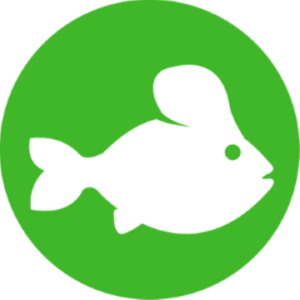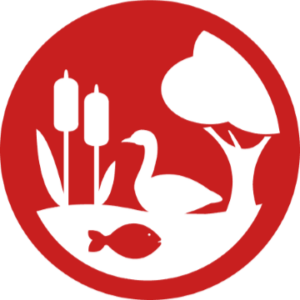Beneficial Use Impairments in the Detroit River Area of Concern
The Detroit River provides many ecological, recreational and economic beneficial water uses. It’s a source of drinking water for 5,000,000 people between Canada and the US, it provides recreational and tourist activities, and supports many aquatic and terrestrial plant and animal species. When something interferes with the enjoyment of a water use, it’s called a beneficial use impairment or BUI. There are 14 potential BUIs identified in the GLWQA (common to all AOCs) that the RAP Team uses to focus restoration needs, track progress and report on success.
The Canada-United States Great Lakes Water Quality Agreement (GLWQA) identifies 14 beneficial uses that must be restored in order to remove the designation as an Area of Concern (AOC). Each BUI has a set of locally-defined de-listing criteria that are specific, measurable, achievable, and scientifically-defensible. See below for the Detroit River Canadian Cleanup’s Delisting principles, which outlines considerations for determining a BUI is no longer impaired. Additionally, the table below lists all 14 possible impairments identified by the GLWQA as well as their most recent status for the Detroit River Canadian AOC.
DRCC Delisting Principles
The DRCC developed the following principles to guide the DRCC’s approach to delisting and re-designating the status of BUIs (including the development of delisting criteria; see Chapter 4 of the Stage 2 RAP Report) for the Canadian side of the Detroit River AOC.
- The RAP should recognize that the Detroit River (as a whole) is surrounded by significant urban development with some rural influences on the Canadian side. Even though the entire River is classified as an AOC, it is not clear that the entire river is impaired. There may be hotspots (e.g., the Trenton Channel or at marinas) but certain BUIs in the river as a whole may be unimpaired. Delisting should be based on the river as a complete ecosystem and should not be dependent on the complete elimination of all hotspots.
- There are some region-wide issues that are beyond the AOC program. Therefore, causes of beneficial use impairments must originate within the Detroit River AOC.
- Need to distinguish between in-river sources and upstream/regional sources.
- Sources should be active and anthropogenic in nature.
- A significant portion of the river must be affected. For example, loading from a tributary may have a minimal, localized impact at the mouth of the tributary, but the river as a whole may not be impacted. If severe impairment in a smaller area exists, it would have to be addressed before delisting can occur.
- The RAP should deal with the watershed issues that impact the river (i.e., those that are linked to BUIs). Recommendations have been made in this Stage 2 RAP Report for investigating the impacts of the watershed on the river. If the cause of the impairment is the watershed, then a program should be developed to address it.
- Delisting criteria should be linked to the listing criteria for the BUI (i.e., the original reasons that the beneficial use was deemed impaired).
- Delisting criteria must recognize that the AOC is located in a highly urbanized area and that the Detroit River is a major international shipping corridor. The attainment of the criteria would not mean that the Detroit River has returned to a pristine, natural state. However, the achievement of these goals would mean that the Detroit River is no longer the seriously polluted body of water it once was, and is well on its way to becoming even healthier.
- After the delisting criteria have been achieved and the BUI re-designated as not impaired, the BUI should be assumed to remain unimpaired unless monitoring demonstrates that a significant impairment has again arisen.
Status of the Canadian Detroit River’s Beneficial Use Impairments
| BENEFICIAL USE IMPAIRMENTS |
STATUS | |
#1 Restrictions on Fish and Wildlife Consumption…will be considered not impaired when consumption advisories for indicator fish species (e.g., walleye, brown bullhead, and smallmouth bass) given for the sensitive population in the AOC are similar to upstream or downstream non-AOC Great Lakes reference areas. |
Impaired for fish |  |
#2 Tainting of Fish and Wildlife Flavour…will be considered not impaired when survey results confirm that there is no statistically significant tainting of fish flavor when compared to fish from upstream of the Detroit River. |
Not impaired (May 2014) |
 |
#3 Degraded Fish and Wildlife Populations…will be considered not impaired when environmental conditions support self-sustaining and healthy communities of indicator fish (e.g., walleye, bass, lake sturgeon, brown bullhead) and wildlife (e.g., black-crowned night heron, Northern leopard frog) species. |
Impaired |  |
#4 Fish Tumours and other Deformities…will be considered not impaired when incidence rates of liver tumours in brown bullhead (aged 3-5 years) are not statistically different than the Great Lakes background rate (2%). |
Not impaired (December 2020) |
 |
#5 Bird or Animal Deformities or Reproductive Problems…will be considered not impaired when incidence rates of bird and animal reproductive problems in sentinel wildlife species do not exceed background levels at suitable reference sites elsewhere in the Great Lakes basin or suitable inland control populations for a minimum of three years; AND …when scientifically defensible wildlife bioassays of indicator species confirm that there are no reproductive problem and no significant toxicity from the water column or sediment contaminants or bioaccumulation. |
Impaired |  |
#6 Degradation of Benthos…will be considered not impaired when the benthic community composition is temporally and spatially identified as non-impaired based on an objective and quantitative community analysis and/or a comparison to appropriate reference sites within the river; AND …when benthic organisms analyzed for persistent, bioaccumulative substances (e.g., PCBs and mercury) are below thresholds required to protect fish and wildlife. |
Not impaired (December 2020) |
 |
#7 Restrictions on Dredging Activities…will be considered not impaired when there are no limitations on the disposal of sediments removed for routine navigational dredging. |
(May 2019) |
 |
#8 Eutrophication or Undesirable Algae…will be considered not impaired when the nutrient status of the waters of the Detroit River will support the establishment of mesotrophic conditions in the Western Basin of Lake Erie, and the shoreline of the river will support minimal grown of attached algae (e.g., Cladophora). |
Not impaired (2010)
|
 |
#9 Restrictions on Drinking Water Consumption or Taste and Odour Problems…will be considered not impaired when treatment (i.e., settling, coagulation, disinfection) required to bring raw river water to a quality that will meet provincial drinking water standards does not exceed the standard treatment used in comparable areas of the Great Lakes, and When surveys of drinking water providers confirm that there are no statistically significant taste and odour problems. |
Not impaired (2010) |  |
#10 Beach Closings…will be considered not impaired when the frequency of beach closures due to elevated counts of E. coli in the Detroit River (White Sands Conservation Area and McKee Park) does not exceed the frequency at upstream (Sandpoint) and downstream (Holiday) reference beaches. |
Not Impaired (2014) |
 |
#11 Degradation of Aesthetics…will be considered not impaired when the waters are devoid of substances at levels that produce persistent objectionable deposits, colours, turbidity, and/or odour. |
Not Impaired (2014) |
 |
#12 Added Costs to Agriculture or Industry…will be considered not impaired when there are no significant additional costs required to use raw Detroit River water for agricultural and industrial purposes. |
Not impaired (2010) |
 |
#13 Degradation of Phytoplankton and Zooplankton Populations…will be considered not impaired when the composition and relative abundance of phytoplankton and zooplankton of the Detroit River reflect that of Lake Huron, and therefore represent primarily oligotrophic/mesotrophic conditions. |
Not impaired (2021) |  |
#14 Loss of Fish and Wildlife Habitat…will be considered not impaired when Coastal wetlands: Protect existing coastal wetland habitat and restore wetland function in priority areas of the AOC and its watershed (as identified in the 2007 Detroit River AOC Canadian Priority Habitat Sites and the 2013 Essex Region Natural Heritage System Strategy. Aquatic & riparian habitat: Protect existing fish and aquatic wildlife habitat (deep water, coastal, nearshore) and restore ecosystem function of these priority areas in, and hydrologically connected to, the Detroit River. Shoreline softening: Develop and begin to implement a shoreline management strategy to soften and naturalize Detroit River Canadian shoreline, whenever opportunities arise. Terrestrial habitat: Protect existing natural terrestrial corridors and restore ecosystem function between the Detroit River and the Ojibway Prairie Complex, the LaSalle Candidate Natural Heritage sites, and other major identified habitat sites (as identified in the 2007 Detroit River AOC Canadian Priority Habitat Sites, the 2013 Essex Region Natural Heritage System Strategy, and other fish and wildlife habitat assessments. |
 |


